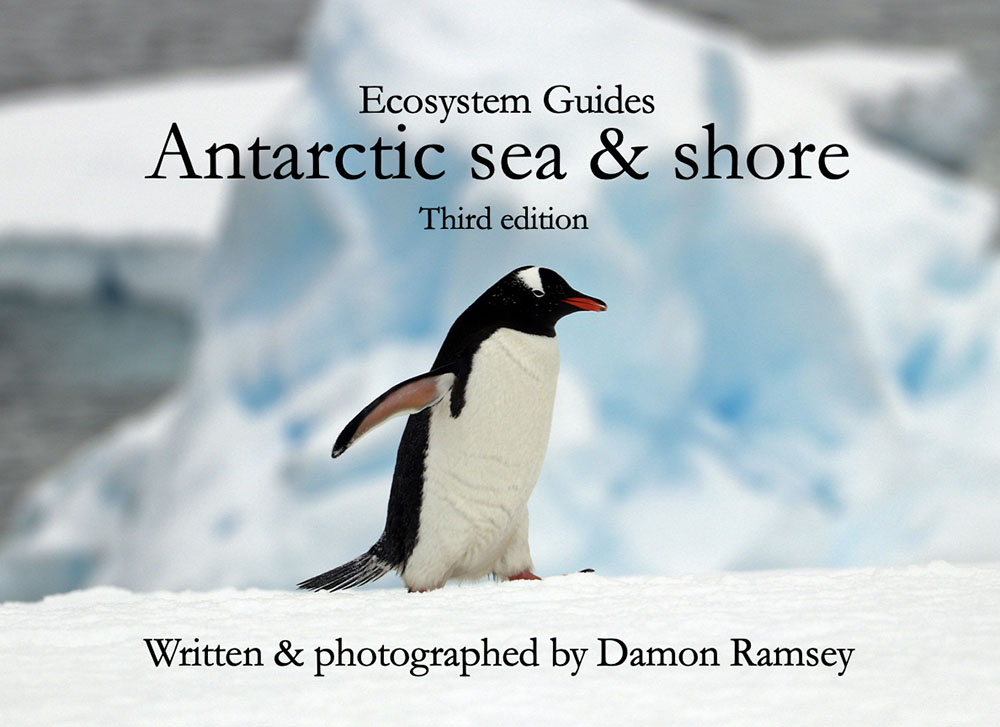ecosystem-guides.com
....exploring the planet's ecosystems
(PAN) TROPICAL
Open Ocean
Many of the same species of sea-jellies, fish and birds are distributed across the tropical open seas of the Atlantic, Indian and Pacific Oceans. This makes the 'tropical open oceans' the largest ecosystem on the planet!
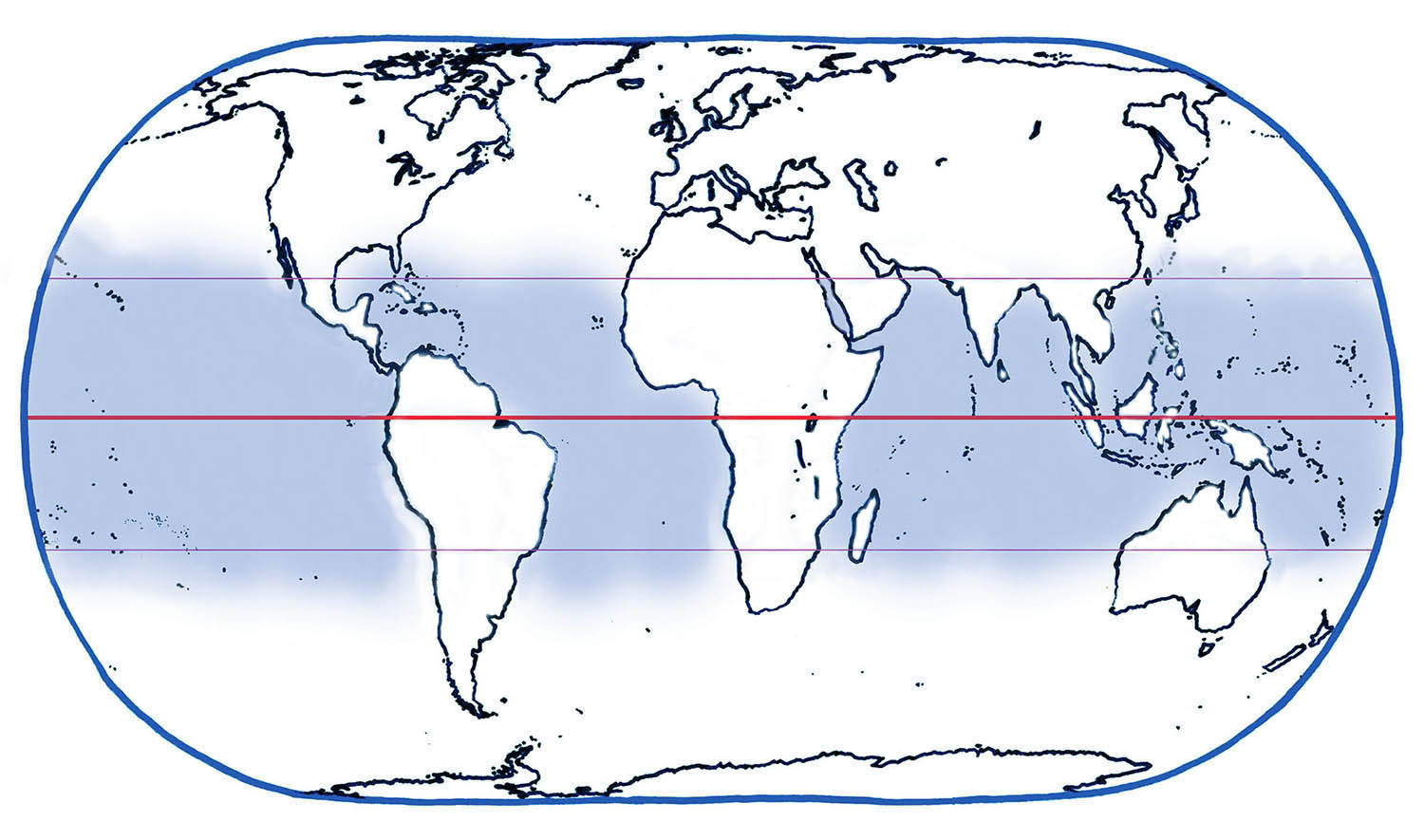
Most sea-jellies are predatory animals. Their stings are meant to subdue their prey for capture and consumption.
 A smack of sea-jellies, (off Madagascar).
A smack of sea-jellies, (off Madagascar).Some species (especially those that become isolated in marine lakes) lose their toxic weaponry and become photosynthetic.
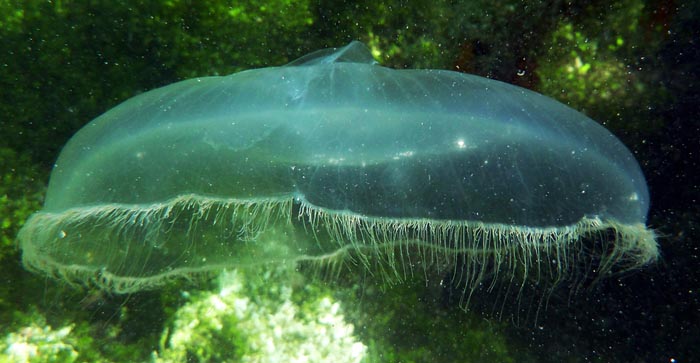 The most commonly seen sea-jelly - the Aurelia aurita, 'Moon Jellyfish' (Kakaban, Indonesia).
The most commonly seen sea-jelly - the Aurelia aurita, 'Moon Jellyfish' (Kakaban, Indonesia).One of the most deadliest animals in the world is a sea-jelly. Below is Chironex fleckeri, the '(Australian) Box Jellyfish' .
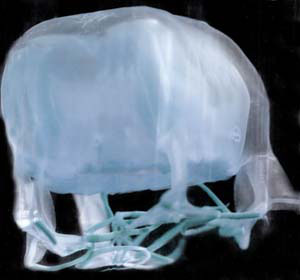 The most dangerous sea-jelly - the Chironex fleckeri, '(Australian) Box Jellyfish' - in a jar!
The most dangerous sea-jelly - the Chironex fleckeri, '(Australian) Box Jellyfish' - in a jar!The biggest fish on the planet is Rhincodon typus, 'Whale Shark'. It is the only species in it's family.
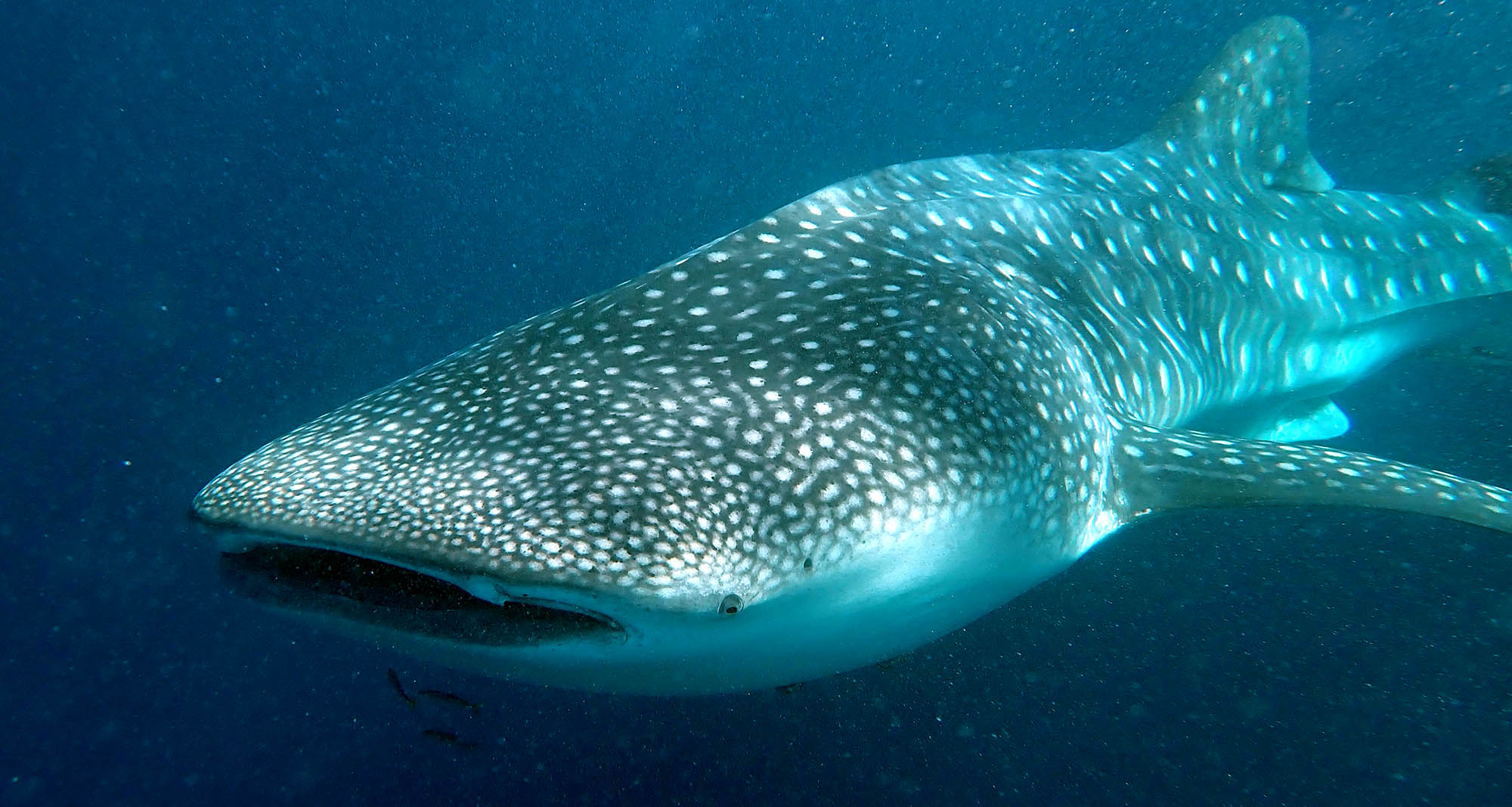 Whale Shark, (Ningaloo, Australia)
Whale Shark, (Ningaloo, Australia)The most spectacular fish of the open tropical oceans are the flying fish.

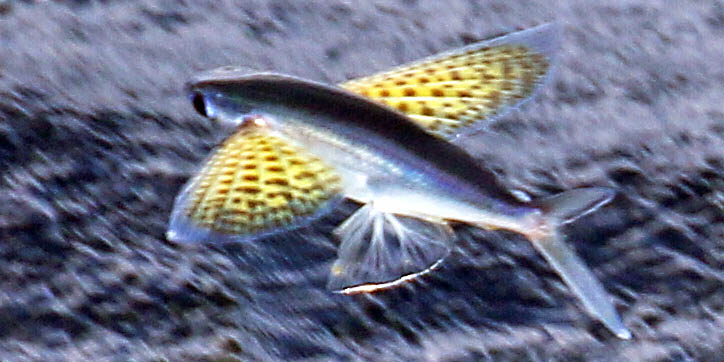 Leopardwing, Indonesia
Leopardwing, Indonesia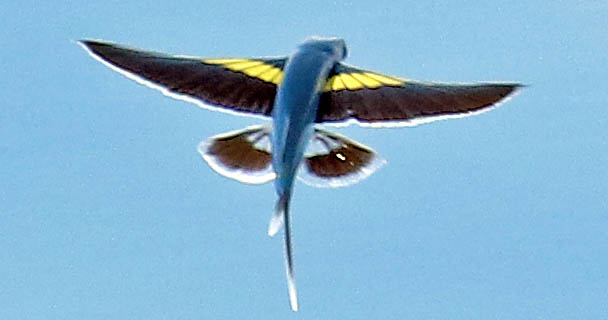 'Yellowband Flying Fish'
'Yellowband Flying Fish'Of the marine turtles, the most commonly see is Chelonia mydas, 'Green Turtle', as it is widespread throughout the world's tropical and warm temperate seas.
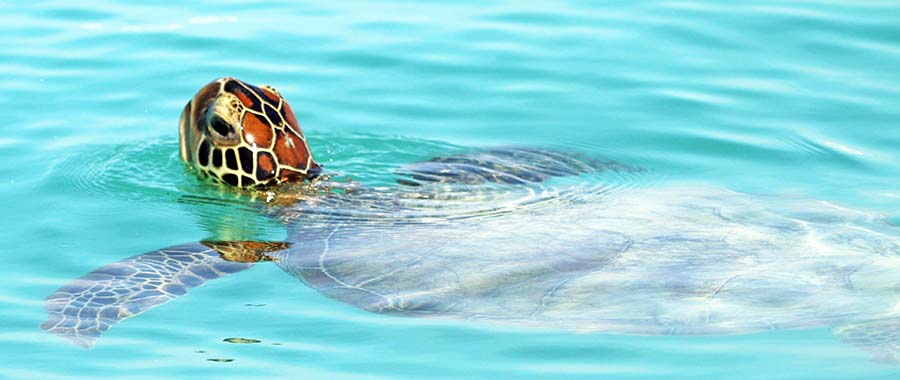 (off the Lacepede Islands, Australia)
(off the Lacepede Islands, Australia)The 'true sea snakes' are purely marine animals, they can't crawl on land and are quite floppy when picked up (although you probably shouldn't pick them up). This distinguishes them from the 'Sea Kraits', which are slightly more amphibious and can crawl up on land to rest and digest. The 'true' Sea Snakes (pictured below) are mostly found across the tropical Indo-Pacific ocean. In my experience, they seem more common in the continental shelf waters in the Arafura and Timor seas off northern Australia. They are best seen on calm days when the water surface is slick and smooth. But you may have to wait for many hours on the deck of a ship to see one. But it is worth it to see something most people have never seen!
 (Gulf of Carpentaria, Australia)
(Gulf of Carpentaria, Australia)The terns are the most common and obvious birds of tropical seas...
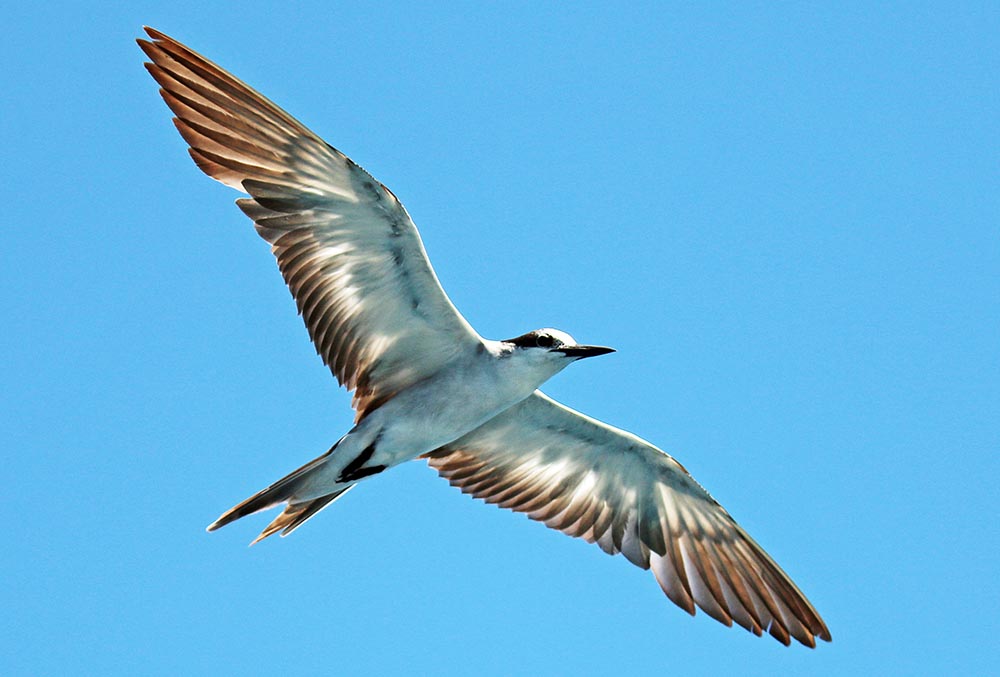 'Bridled Tern', (Palau)
'Bridled Tern', (Palau)The most spectacular birds above the tropical open oceans are the Frigatebirds.
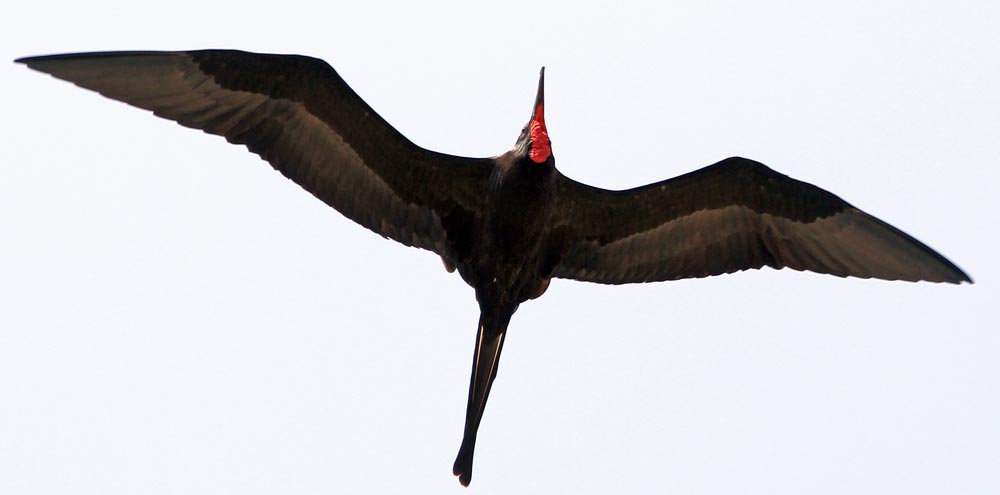 'Magnificent Frigatebird'. Found around South and Central American ocean waters.
'Magnificent Frigatebird'. Found around South and Central American ocean waters.A specialised group adapted to the more remote parts of the tropical open oceans are the tropicbirds...
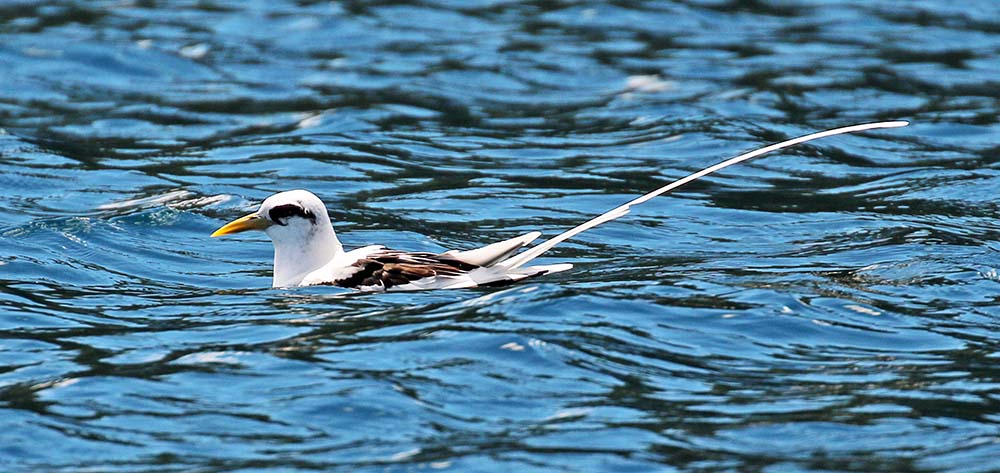 White-tailed Tropicbird (Palau)
White-tailed Tropicbird (Palau)Of the dolphins found in the tropical open oceans, the one most familiar to people is the 'Bottlenose Dolphin'. However, this now usually considered to be three or even four different species. Two occur across larger areas of the tropics, with the larger 'Common Bottlenose' Tursiops truncatus, being more widespread and also found in deeper more open water. The closer they examine these two species, the less closely related they seem to be.

The most energetic of dolphins in the tropical open ocean is the widespread Stenella longirostris, 'Spinner Dolphin'. This species probably includes many species; as the very least there are many distinct forms around the world. In the middle of the Pacific Ocean, far away from land, I have seen very tiny forms of Spinner Dolphins.
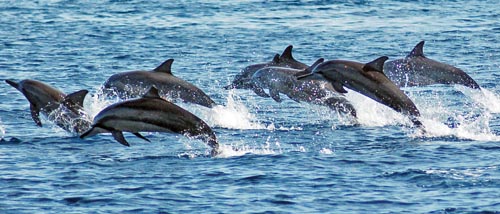 (Papua New Guinea)
(Papua New Guinea)One of the more common larger whales of the tropical open oceans is a winter visitor coming here to breed; the Megaptera novaeangliae, 'Humpback Whale'.
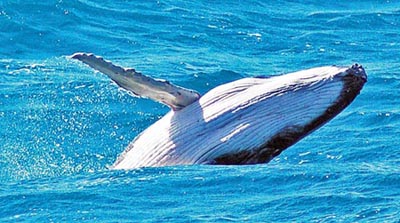 (Kimberley coast, Australia)
(Kimberley coast, Australia)Places to experience the tropical open oceans
In Australia, there are birds breeding on the islands of Ashmore Reef. In Indonesia waters: for whale sharks, visit Cenderawasih Bay in West Papua. For the best jellyfish lake, go to Kakaban. In the Philippines: for whale sharks they are off Donsol Philippines.
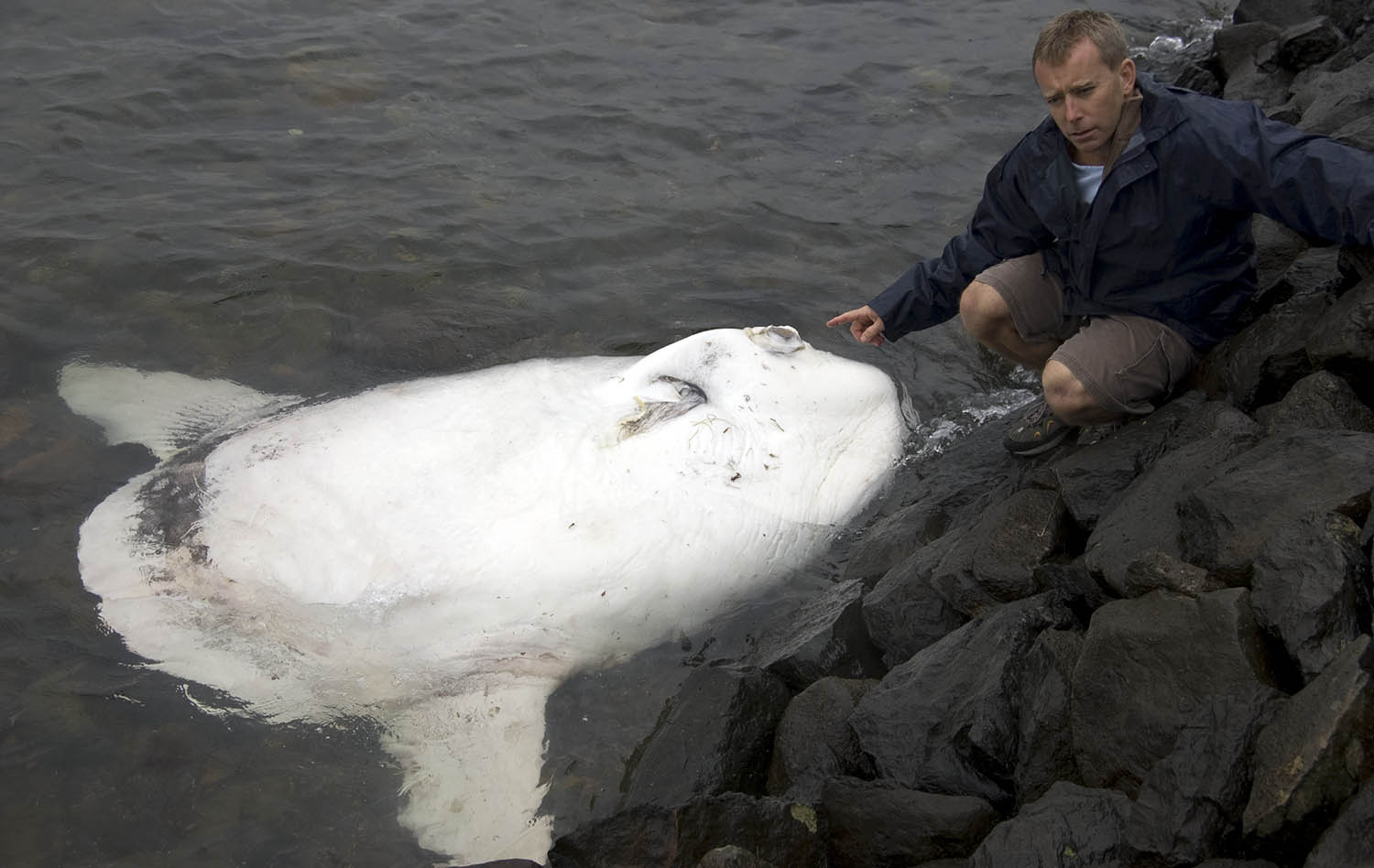 The author Damon Ramsey with the largest bony fish in the world, the Sunfish. This one is dead. (photo by Mark Steadman)
The author Damon Ramsey with the largest bony fish in the world, the Sunfish. This one is dead. (photo by Mark Steadman)Other related habitats
In some areas of tropical ocean are the beautiful and diverse Indo-Pacific coral reefs. Alongside this warm ocean are the Indo-Pacific tropical seashores. And different regions have their own distinctive intertidal forest habitats, such as the Australasian mangroves and the Asian mangroves.

